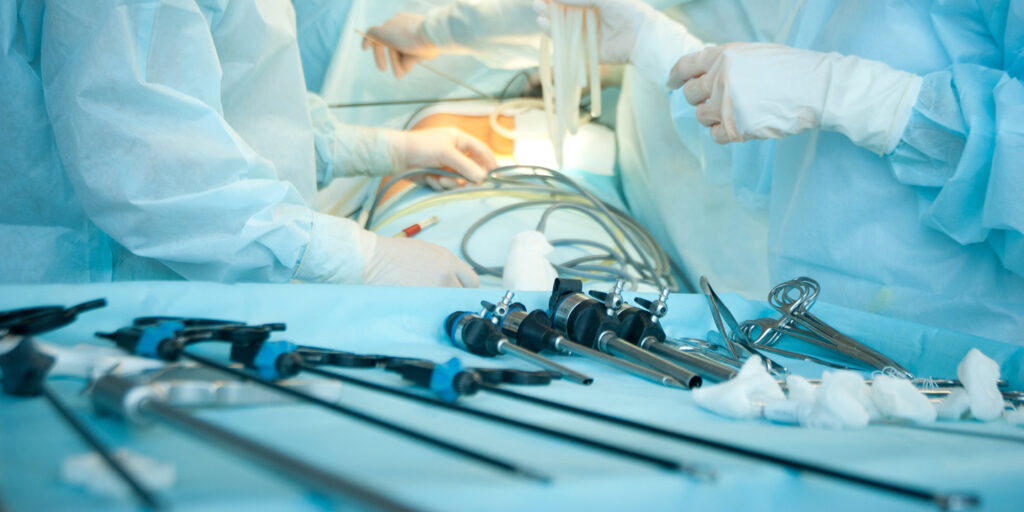Last Updated on March 11, 2024 by admin
Wondering what services laparoscopy clinics provide?
We got you covered. Read this blog post till the end.
A diagnostic laparoscopy, usually referred to as a laparoscopy, is a surgical diagnostic technique used to inspect the organs within the belly as well as other confined regions, such as the knees. It’s a very less invasive technique that carries a minimal risk and requires tiny incisions.
A laparoscope is a device that a doctor uses to examine the abdominal organs during an abdominal laparoscopy. It is a long, narrow tube with a front-facing high-intensity light source and a high-resolution camera. Through a cut in the abdominal wall, the tool is introduced. The camera delivers pictures to a video display as it travels.
Without needing to make significant incisions, a laparoscopy enables your doctor to view inside your body in real-time. In the course of this treatment, your doctor may potentially do surgery and acquire biopsy samples.
Laparoscopy is a surgical method that may be used to support procedures in the following areas, including
- Treatments For Infertility
Infertility laparoscopy is often performed for cases where other reproductive testing has failed to provide a clear diagnosis. Due to this reason, laparoscopy is frequently carried out on female infertility patients.
Additionally, laparoscopy enables the biopsy of doubtful tumors and cysts that could interfere with fertility. For women who are suffering pelvic discomfort, which might be an indication of endometriosis, laparoscopy may be advised. Scar tissue that may be the source of pelvic or abdominal discomfort can also be removed during a laparoscopy.
There are several best laparoscopy clinics in Chandigarh and other cities of India that you can consider for your infertility diagnosis as well as treatment.
- Gallbladder Surgery
Laparoscopic Cholecystectomy is used to remove the gallbladder when it is filled with stones. It is a less invasive procedure than open Cholecystectomy. Most patients go home the same day from the procedure, which only requires a few tiny incisions, and quickly resumes their regular activities. The gallbladder is an organ that resembles tiny pears in size and shape. Bile, a material produced by the liver, is kept there. When the body needs bile to digest fatty meals, it is held till then. Crystals called gallstones develop in the gallbladder. They may obstruct the passage of bile from the gallbladder into the digestive tract. A laparoscopic cholecystectomy provides relief for those with gallstones that are infected and causing discomfort.
- Surgery On The Small
Patients who have tiny intestinal tumors typically need surgery. Open and laparoscopic techniques are the two choices. The laparoscopic approach requires sophisticated expertise and might not be available to many people. It is the least invasive and is sometimes also called the “single-incision method.”
Enlarging an incision is necessary for laparoscopic surgeries for small bowel resection in order to facilitate specimen removal as well as intracorporeal anastomosis. When performed on a small group of patients, ‘less invasive GIST resection has been demonstrated to have favorable oncologic results with a shorter hospital stay, less postoperative discomfort, and marginally fewer problems than open surgery.
- Surgery To Treat A Hernia
Inguinal hernias that are producing discomfort or other symptoms should be surgically repaired. It is also advised for hernias that have been imprisoned or strangled. Children with inguinal hernias should always have surgery.
Typically, children are not candidates for laparoscopic hernia repair. However, a laparoscope may be utilized to examine the opposite groin for a hernia for open hernia surgeries in youngsters. To do this, doctors insert the scope into the side being worked on and look from the other side. In the event that a hernia is discovered, the surgeon can treat both sides simultaneously.
- Pancreatic Surgery
A laparoscopic distal pancreatectomy is used to remove tumors from the body or tail of the pancreas that is benign or malignant (cancerous). It is a minimally invasive procedure. More and more surgeons are using this technology these days because of its plethora of benefits.
Due to its proximity to the pancreas and the fact that it shares certain blood arteries with it, the surgeon will frequently need to remove the spleen. You’ll need to stay in the hospital only for three to five days following surgery. In order to get fluids and medicines, you will also have an IV tube in your vein.
The Bottom Line-:
All the above services are provided by the best laparoscopic clinics. If you have gallstones, infertility issues, or problems in the pancreas or esophagus, the doctors specializing in laparoscopic van help.
Read more :- https://newsjoury.com/

